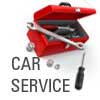Top 5 Maintenance Tips to Keep Your Honda Cars Running Smoothly
Listen to this Article
July 2024

It is your duty as a Honda owner to carry out routine maintenance on your vehicle to keep it in its best condition and extend its lifespan. Maintaining your car properly not only increases its safety and performance but also helps it retain its worth. Here are five vital pointers to ensure the best possible care for your Honda vehicle:
Regular Oil Changes
The foundation of car maintenance is routine oil changes. Your engine's moving parts are lubricated by engine oil, which lowers friction and prevents the engine from overheating. But as time passes, the oil deteriorates and is tainted with waste such as scraps of metal and other particles, which can wear out engines and lower their performance.
Depending on your driving conditions and the type of oil you use, Honda recommends changing your engine's oil every 5,000 to 7,500 miles. Following these recommendations is essential for maintaining the health of your engine. Improved performance, lower pollutants, and seamless engine running are all guaranteed with fresh oil. Ignoring oil changes can result in expensive repairs and serious engine damage.
Furthermore, follow the oil recommendation in your owner's manual at all times. Your warranty may be voided and engine performance could be negatively affected by using the incorrect oil. Checking the oil's quality and level on a regular basis will also assist you in seeing possible issues early on, such leaks or unexpected oil usage.
Maintain Tire Health
Since tires are your vehicle's point of contact with the road, they are essential to performance, safety, and energy efciency. Many essential procedures are involved in proper tyre maintenance:
- Check Tire Pressure
Regularly check tire pressure since improper or over inflated tires can cause handling issues, uneven tread wear, and decreased fuel efficiency. At least once a month, use a tire pressure gauge to check the pressure and adjust it in accordance with the guidelines found in your owner's handbook or on the tire placard on your automobile. - Tire Rotation
Changing your tires on a regular basis, usually every 6,000 to 8,000 miles, guarantees even wear and increases tire longevity. Inequality in wear can cause handling problems and raise the possibility of blowouts. - Alignment and Balancing
Imbalanced tires or misaligned wheels can lead to uneven wear and have an impact on how well your automobile handles. Have a professional look at your alignment and balance if you feel vibrations in your car or notice it dragging to one side. Proper tire maintenance not only enhances safety but also contributes to a smoother ride and better fuel economy. Inspect and Replace Air Filters
Since air filters capture dirt, dust, and other particles before they enter the engine, they are essential to preserving engine health. Airflow restriction from a clogged air filter can result in poor engine performance, decreased fuel efficiency, and higher emissions. To guarantee that your engine receives clean air for effective combustion, regularly check your air filter and replace it as needed. The majority of manufacturers advise inspecting the air filter every 12,000 to 15,000 miles, however if you travel in dusty or polluted conditions, it's advisable to check it more frequently.
By eliminating aggressive particles from generating wear and tear, a clean air filter not only increases engine performance but also helps to extend engine life. It's a quick and affordable maintenance procedure that can have a big impact on the general health of your car.
Monitor Fluid Levels
In addition to engine oil, your Honda needs a few more fluids to run efficiently and securely. For a variety of systems to operate as intended, it is essential to periodically check and maintain these fluid levels:
- Coolant
By controlling engine temperature, coolant helps keep your engine from overheating. Check the reservoir's coolant level and add more if needed. To stop corrosion and buildup, it's also critical to fush and replenish the coolant in accordance with the manufacturer's instructions. - Brake Fluid
The hydraulic braking system requires brake fluid to function. Brake failure or decreased braking efficiency can result from low or contaminated brake fluid. Periodically check the condition and amount of the brake fluid, and replace it every two years or as recommended by your owner's handbook. - Transmission Fluid
The transmission system is cooled and lubricated by the transmission fluid. Shifting issues and gearbox damage can be brought on by low or contaminated gearbox fluid. As directed by your handbook, check the fluid level and condition, and replace it when needed.
Power steering fluid is used to provide precise steering. Steering difficulties and possible power steering system damage might result from low power steering fluid. Check the fluid level frequently and add more if needed. - Windscreen Washer Fluid
Keeping the washer fluid levels in check is crucial for good visibility, even if it's not necessary for the car to operate. Regularly check and replenish the washer fluid. Monitoring and maintaining these fluid levels can prevent system failures and costly repairs, ensuring your car operates smoothly and efficiently.
Follow Scheduled Maintenance
Adhering to the manufacturer’s recommended maintenance schedule is perhaps the most comprehensive way to keep your vehicle in top condition. Your owner’s manual provides a detailed maintenance schedule, outlining the intervals for various inspections and services.
Frequent maintenance at these intervals aids in the early detection of possible problems, before they develop into more signifcant ones. This proactive strategy includes crucial services like:
- Oil and Filter Changes: As mentioned earlier, regular oil changes are crucial for engine health.Tire Rotation and Alignment: Ensures even tire wear and optimal handling.
- Brake Inspection: Regular checks and maintenance of the braking system for safety.
- Battery Check: Ensures your battery is in good condition and prevents unexpected failures.
- Belt and Hose Inspection: Identifies wear and tear in belts and hoses that could lead to breakdowns.
- Spark Plug Replacement: Essential for efficient engine operation and fuel efficiency.
In conclusion, keeping your Honda car in good condition requires regular oil changes, maintaining tire health, inspecting and replacing air filters, monitoring fluid levels, and adhering to the scheduled maintenance. By following these essential tips, you can ensure your Honda remains reliable, safe, and efficient for many years to come. Proper maintenance not only enhances the performance and longevity of your vehicle but also provides peace of mind and a better driving experience.
Reach out to us, we are Authorised Service Centre for Honda Cars from Andheri to Borivali.. We have well-trained & experienced Mechanics who will provide you quality car repair service at your Doorstep.We value your money, Hence we offer fair and transparent prices repair charges as compared to other workshops.
If you are looking to service your Honda Car, visit Solitaire Honda Authorised Service Centre today! Connect with us to know more.
Also read: Finding the Best Honda Elevate Dealers in Borivali
Back to All: Car Maintenance Tips, Tricks, Article, Resources
To Know More About Honda car showroom Mumbai Visit Solitaire Honda Mumbai, Contact us at 022 4149 5333 or email us at sales@solitairehonda.com










